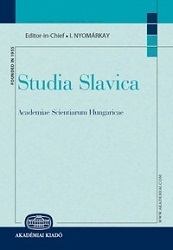Релевантность понятий «гештальт», «фигура», «фон», «фокус» для анализа концептуальной области «кажимости»
The Relevance of the Concepts gestalt, figure, background, and focus for the Conceptual Framework Analysis of кажимость
Author(s): Elena Vadymivna CherntsovaSubject(s): Epistemology, Semantics, Pragmatics, Cognitive linguistics, Philosophy of Mind, Philosophy of Language
Published by: Akadémiai Kiadó
Keywords: cognitive semantics; conceptualization; conceptual framework; gestalt; figure; background; focus; metacognitive representation; proposition;
Summary/Abstract: The paper suggests the metacognitive representation of the conceptual framework of кажимость gestalt. The metacognitive representation is based on the inferential conclusions obtained by cognitive-discursive analysis of the functioning contexts of polysemous verbal predicates казаться, показаться. The Gestalt script includes native speakers’ experience conceptualized in the semantics of contexts. This experience can be presented by the following meta-utterances: The speaker knows that it is not possible to see an object being observed properly from afar, i.e. the first impression of it could turn out to be mistaken. The speaker also knows that it is possible to come closer to the object afterwards and observe it, i.e. to re-verify the results of perception empirically. This allows them to form a more complete idea / knowledge about the object. Subsequently, the speaker reflects on his first visual impression based on the received idea / knowledge, evaluates it as “true” or “false”. In addition, the speaker is aware that there are particular circumstances under which effect the visual images of objects in the real world are distorted and the recipient receives visual illusions. In the paper, a cognitive Gestalt script was formed. Based on it, all contexts with the words казаться, показаться are built. Due to the dialectical combination of perceptual and epistemic modes, a single /unified Gestalt script consists of two parts. On the one hand, there is supposed to be a subject-experiencer as well as his perceptual act, the object he observes, the first, potentially erroneous /distorted image of the object. There should also be a potential opportunity to implement an act of reflexive verification of the first impression and establish the truth. On the other hand, there is supposed to be the subject as a bearer of knowledge, his knowledge of the distorted character of the subject-experiencer’s perception as well as his knowledge of the inconsistency between the subject-experiencer’s first impression and what exists in reality. In addition, there should be implicit /explicit awareness of the reasons that led to the distortion of the perception results. The author demonstrates the integrity of the conceptual semantics of the Gestalt script. The correlation between the conceptual level and the level of language semantics is shown in a sketchy way in terms of figure, background, and focus. The author also describes focus shifts which underlie the construction of different contexts – background and figure.
Journal: Studia Slavica Academiae Scientiarum Hungaricae
- Issue Year: 64/2019
- Issue No: 1
- Page Range: 37-46
- Page Count: 10
- Language: Russian
- Content File-PDF

